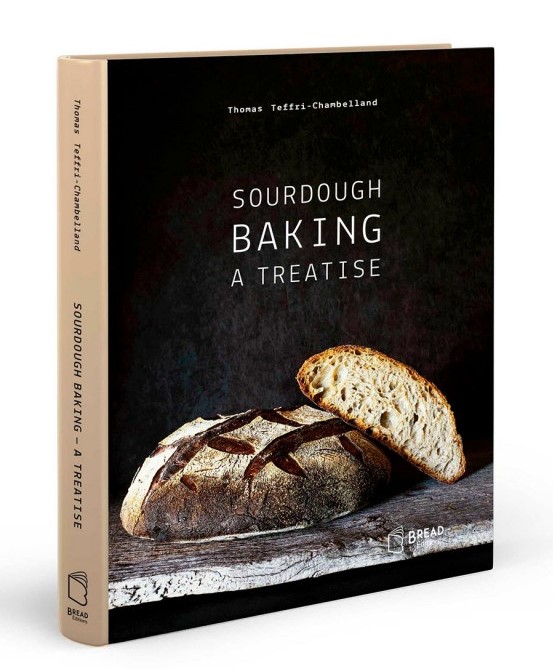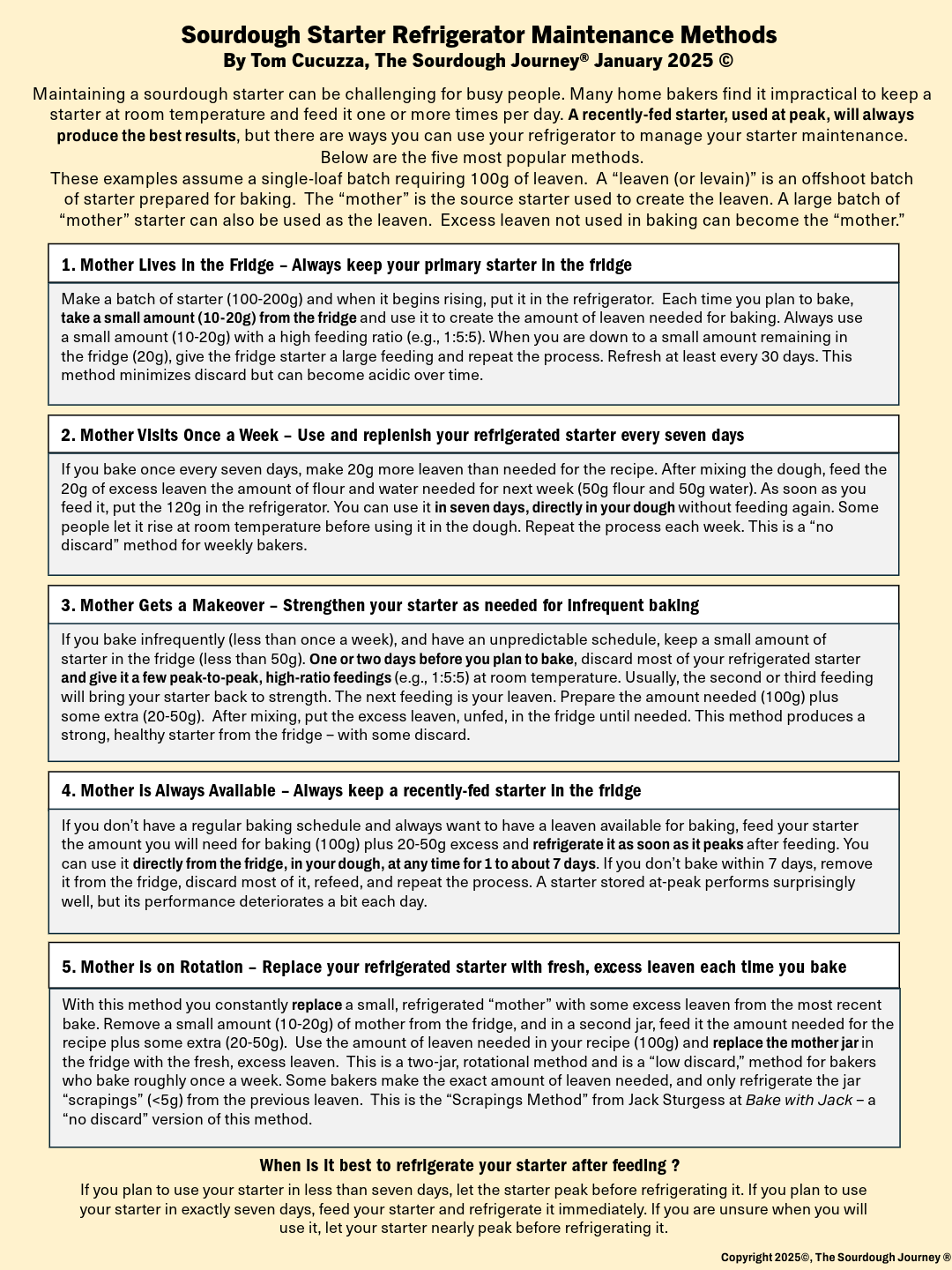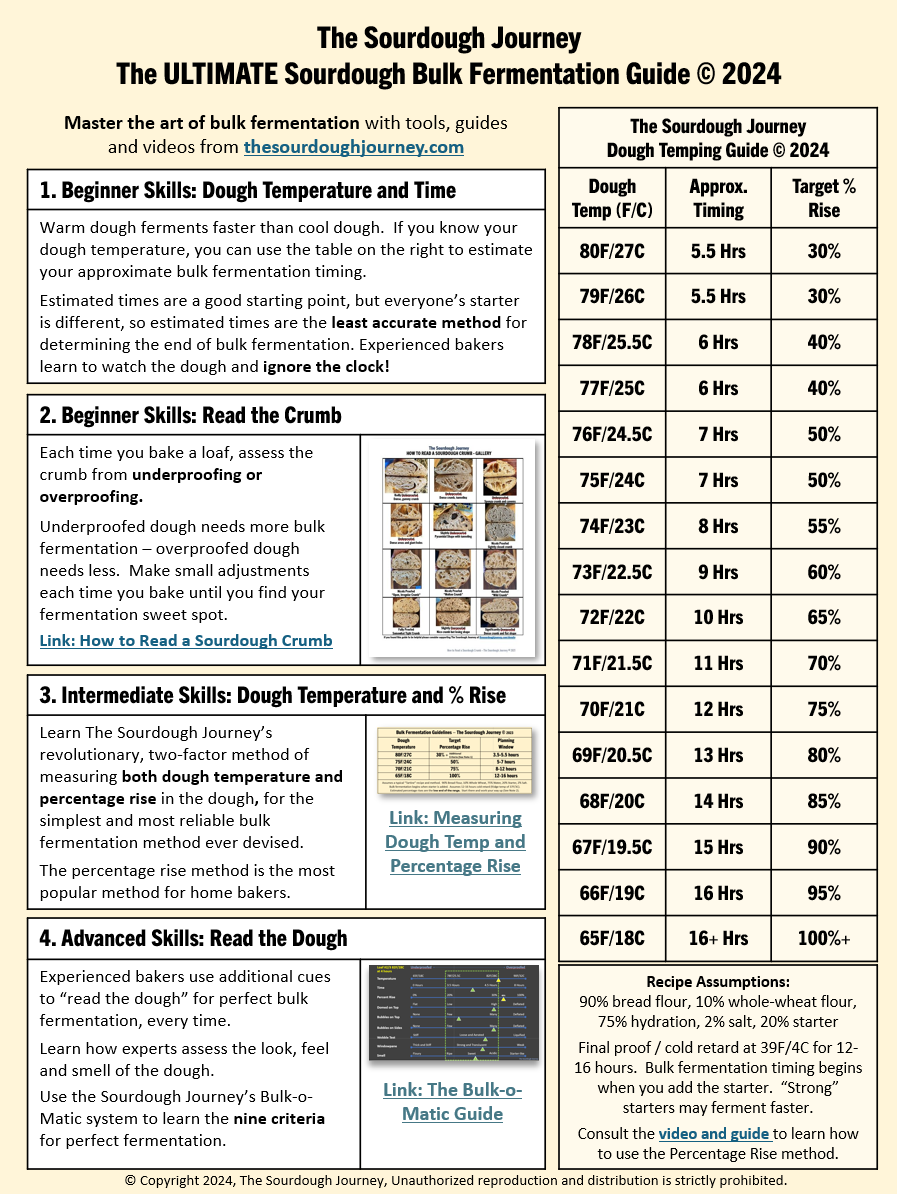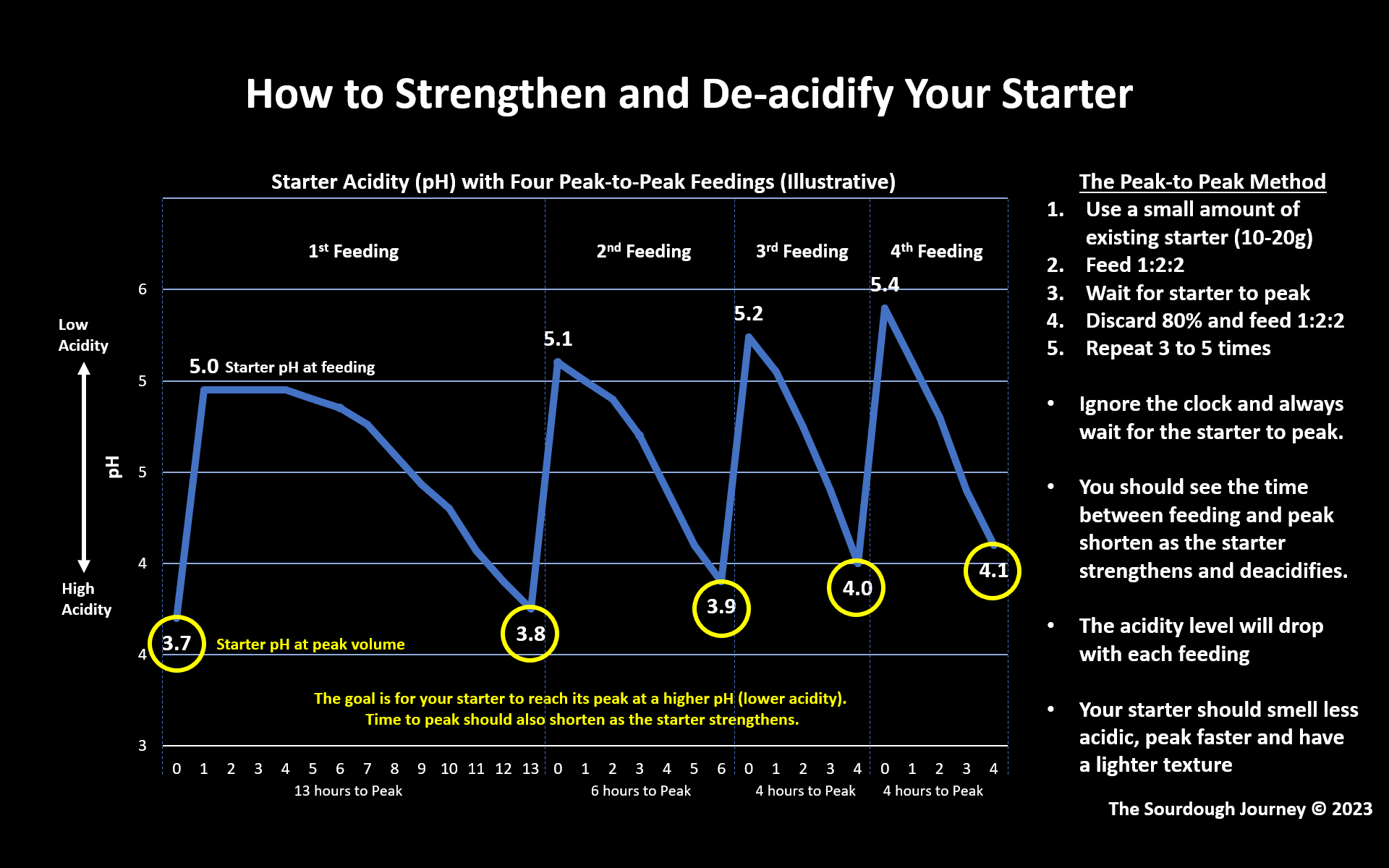
When I saw the words “sourdough” and “treatise” in a book title, it immediately caught my attention. I had high expectations and this book did not disappoint.
Sourdough Baking – A Treatise, published in English in 2021, is the sourdough book I have been looking for. Thomas Teffri-Chambelland, director of the École Internationale de Boulangerie, is the author of this impressive book for sourdough bakers.
Similar to Modernist Bread (Myrhvold & Migoya, 2017) Treffi-Chambelland’s Treatise delves deeply into the science of sourdough baking. The first 120 pages of the book (Part 1: Theory) explores the chemistry and biology of grains, sourdough starters, fermentation, and baking. The author, a former biologist, explains the intricacies of sourdough using biology as the foundational pedagogy. The scientific explanations can be a bit dense and daunting at times, but the author brilliantly summarizes each topic with easy-to-understand diagrams and plainspoken summaries of the science. The unique balance of science and practical advice sets this book apart from all others.
The second section of the book, Practice, delves into each step of the process of sourdough breadmaking from mixing through baking. While I was hoping for a continued emphasis of the science in this section, the author focuses more on the mechanics, steps and troubleshooting techniques. I was hoping to see fermentation time and temperature tables and charts, for example, but they are not included. However, the author offers fascinating tips and enlightening techniques for each step – including starter creation, bulk fermentation, shaping, scoring, and baking.
Section three, Recipes, contains over 30 classic sourdough recipes. The recipes include wheat, rye and ancient grain loaves as well as rice flour and other gluten free options. A section on Viennoiserie – sweet, enriched breads – includes a notably detailed recipe and step-by step process for panettone.
The recipes are short, and to the point. They are presented in a unique, shorthand style with emphasis on the key differences and potential challenges. The recipes are not presented in a traditional step-by-step manner for beginners because they rely on understanding and application of the detailed steps covered in prior sections (Theory and Practice).
The fermentation times suggested in the recipes are quite short and would require a very strong starter/leaven (perhaps stronger than many home bakers may have), so fermentation times should be adjusted accordingly (as noted by the author).
Other unique details include discussion of the pH (acidity) levels of the starter and dough at various stages. Teffri-Chambelland also provides fascinating insight into how scoring patterns impact the crumb structure, and he recommends a unique method a creating a sourdough starter.
The Bottom Line: This book focuses heavily on the science of sourdough, but Teffri-Chambelland finds a way to make it accessible to a broad audience. Unlike Modernist Bread, which covers the science of all types of bread making, this book focuses only on sourdough, which makes it more specific and targeted in its content, insights and audience. The book is best suited for science-minded, intermediate to advanced sourdough bakers.
Recommendation: Highly Recommended!
Tom Cucuzza
Share:
Related Posts

Sourdough Starter: Refrigeration Maintenance Methods
How can I maintain my sourdough starter in the refrigerator instead of at room temperature?

The ULTIMATE Sourdough Bulk Fermentation Guide
When is sourdough bulk fermentation finished?

Dough Temping for PERFECT Sourdough Fermentation
What is sourdough “dough temping,” and how does it work?

The Science of the Peak-to-Peak Method of Strengthening a Sourdough Starter
What is the Peak-to-Peak Method and how does it strengthen a weak sourdough starter?

How to Strengthen a Weak, Acidic Starter
Is your sourdough starter sluggish? How do you identify and fix a weak, acidic starter. This document is the companion guide to the popular video “How to Strengthen a Weak, Acidic Starter.”
